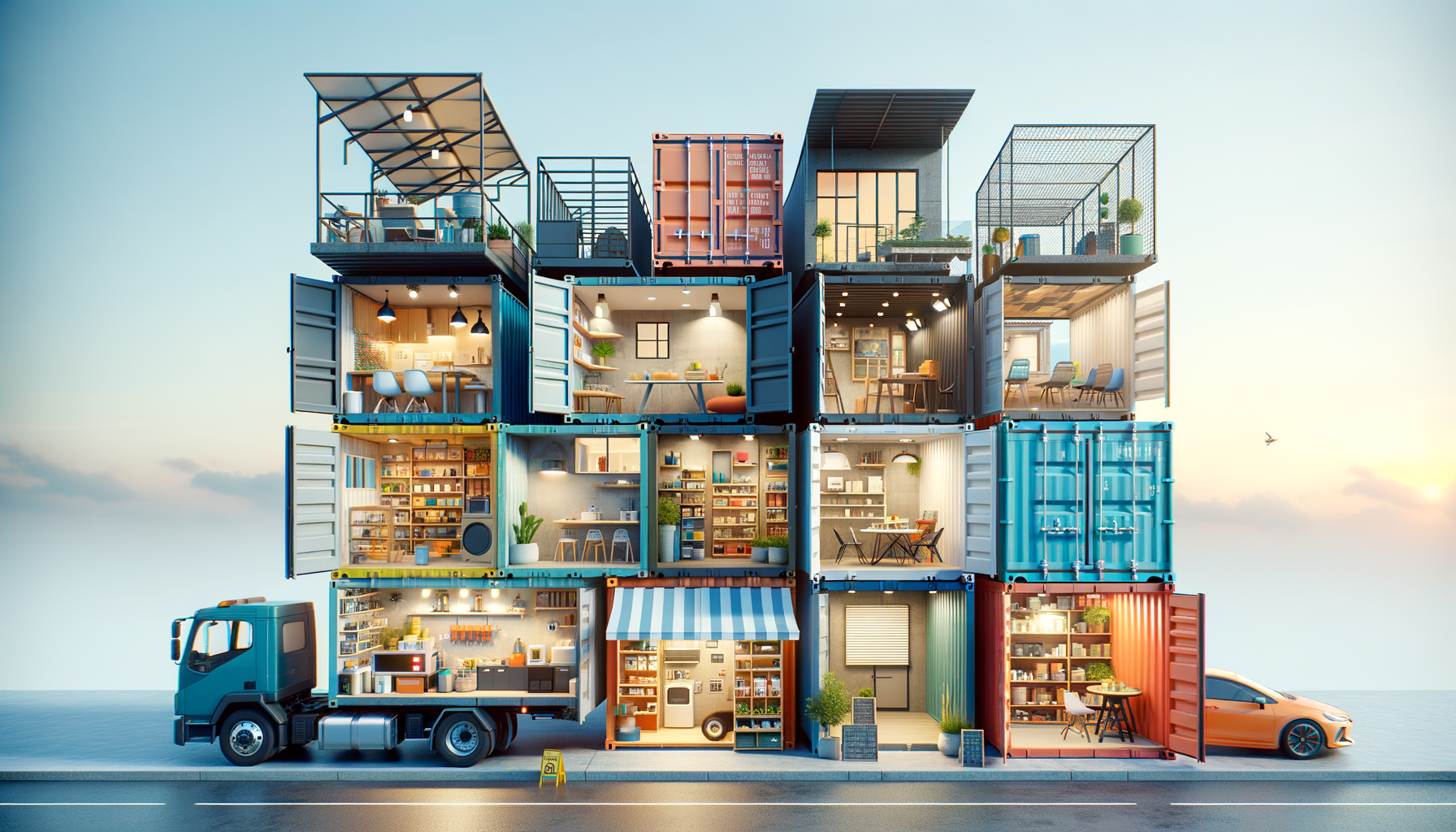The Evolution of Shipping Containers
Shipping containers have long been the backbone of international trade, facilitating the seamless movement of goods across oceans and continents. Initially designed to standardize and simplify shipping logistics, these containers have undergone significant transformations. The evolution began with the need for a robust, standardized unit that could withstand harsh maritime conditions. Over time, their utility has expanded far beyond their original purpose, becoming a cornerstone in the global economy.
Their standardized dimensions—typically 20 or 40 feet in length—have allowed them to be easily transported via ships, trains, and trucks. This versatility has led to a decrease in transportation costs and an increase in efficiency. Shipping containers have become a symbol of globalization, representing the interconnectedness of markets and the free flow of goods. However, their story does not end here.
Today, shipping containers are increasingly being repurposed for various innovative uses. From homes and offices to pop-up shops and art installations, their multifunctional nature is being harnessed in creative and sustainable ways. This shift is driven by the need for cost-effective and environmentally friendly solutions in the face of urbanization and housing shortages. As we delve deeper into their multifunctional nature, it becomes clear that shipping containers are much more than mere metal boxes.
Shipping Containers as Architectural Marvels
One of the most fascinating developments in the use of shipping containers is their integration into architecture. Architects and designers have embraced these steel structures for their durability, modularity, and cost-effectiveness. Shipping container architecture, often referred to as “cargotecture,” has gained popularity in both urban and rural settings.
Shipping containers offer a unique aesthetic appeal with their industrial look, which can be enhanced with creative design elements. They are being used to construct homes, offices, and even hotels. The modular nature of containers allows for flexibility in design, enabling architects to create structures that are both functional and visually striking.
Moreover, the use of shipping containers in architecture aligns with the growing trend of sustainable building practices. By repurposing these containers, we reduce the demand for traditional building materials and minimize waste. This approach is particularly appealing in areas facing housing shortages, as it offers a quick and affordable solution. The potential for customization is vast, with options for insulation, windows, and interior finishes that transform a simple container into a comfortable living space.
Innovative Business Solutions with Shipping Containers
Businesses are increasingly leveraging the multifunctional nature of shipping containers to create unique and adaptable spaces. Pop-up shops, cafes, and restaurants have found a home in these versatile structures. Their portability and ease of setup make them an attractive option for businesses looking to establish a temporary presence or test a new market.
Shipping containers are also being used to create co-working spaces and innovation hubs. These environments foster creativity and collaboration, providing a dynamic space for startups and entrepreneurs. The ability to easily modify and expand these spaces makes them ideal for businesses that require flexibility.
Furthermore, the use of shipping containers in business settings can enhance brand image. The industrial aesthetic and sustainable nature of these structures appeal to environmentally conscious consumers. Businesses can capitalize on this trend by showcasing their commitment to sustainability through the use of repurposed materials. The potential for branding and customization is vast, allowing businesses to create a unique and memorable experience for their customers.
Shipping Containers in Emergency and Relief Efforts
In times of crisis, shipping containers have proven to be invaluable resources for emergency and relief efforts. Their durability and portability make them ideal for creating temporary shelters, medical facilities, and storage units in disaster-stricken areas. Organizations around the world have utilized shipping containers to provide immediate assistance and support to those in need.
The ability to quickly deploy and set up container-based structures is crucial in emergency situations. These units can be transported to remote locations and assembled with minimal infrastructure, providing a safe and secure environment for those affected by natural disasters or conflicts. Additionally, containers can be modified to include essential amenities such as plumbing, electricity, and insulation, ensuring a comfortable living space.
The use of shipping containers in relief efforts also highlights their potential for long-term solutions. In areas with ongoing humanitarian needs, containers can be transformed into schools, clinics, and community centers. This adaptability ensures that these structures continue to serve a purpose long after the initial crisis has passed, contributing to the rebuilding and development of affected communities.
Environmental Impact and Sustainability of Shipping Containers
As the world grapples with the challenges of climate change and environmental degradation, shipping containers offer a sustainable alternative to traditional construction methods. By repurposing containers, we reduce the demand for new materials and minimize waste. This approach aligns with the principles of the circular economy, where resources are reused and recycled to minimize environmental impact.
The use of shipping containers in construction also reduces the carbon footprint associated with traditional building practices. The energy-intensive processes of producing concrete and steel are minimized, as containers are already fabricated and ready for use. Additionally, the modular nature of containers allows for efficient use of space, reducing the overall footprint of a structure.
Furthermore, shipping containers can be equipped with sustainable features such as solar panels, rainwater harvesting systems, and green roofs. These additions enhance the environmental performance of container-based structures, making them an attractive option for eco-conscious individuals and organizations. As we continue to explore innovative uses for shipping containers, their role in promoting sustainability and environmental stewardship becomes increasingly evident.








